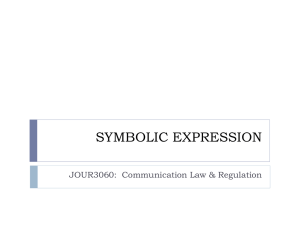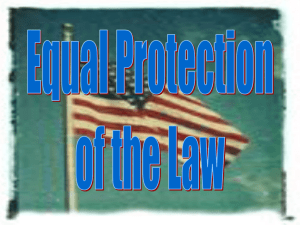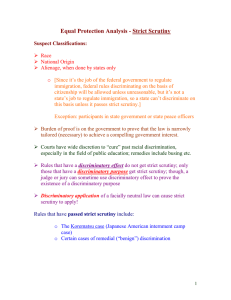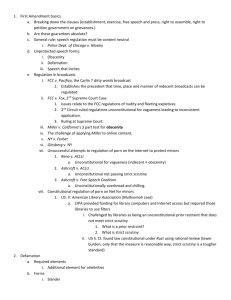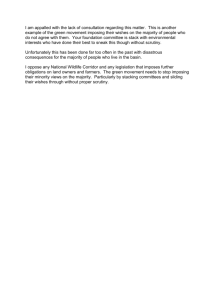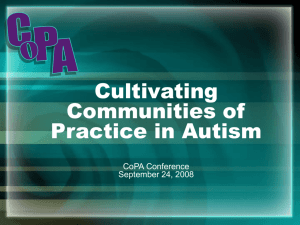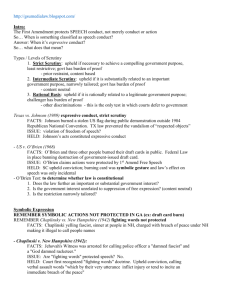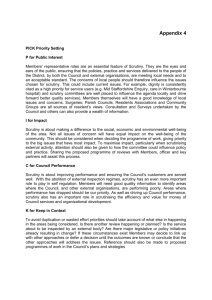ppt - Open.Michigan - University of Michigan
advertisement
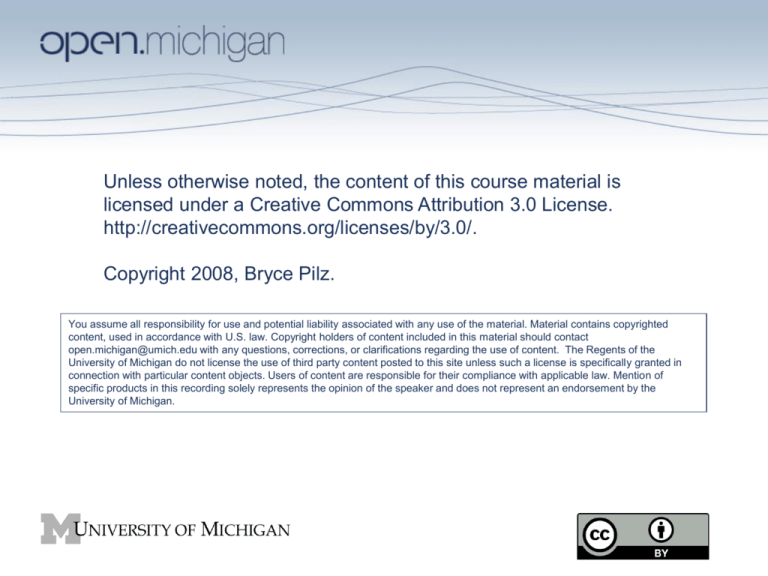
Unless otherwise noted, the content of this course material is licensed under a Creative Commons Attribution 3.0 License. http://creativecommons.org/licenses/by/3.0/. Copyright 2008, Bryce Pilz. You assume all responsibility for use and potential liability associated with any use of the material. Material contains copyrighted content, used in accordance with U.S. law. Copyright holders of content included in this material should contact open.michigan@umich.edu with any questions, corrections, or clarifications regarding the use of content. The Regents of the University of Michigan do not license the use of third party content posted to this site unless such a license is specifically granted in connection with particular content objects. Users of content are responsible for their compliance with applicable law. Mention of specific products in this recording solely represents the opinion of the speaker and does not represent an endorsement by the University of Michigan. First Amendment Primer Introduction to the Week 2 Reading SI 519/PubPol 688 Bryce Pilz Fall 2008 First Amendment Basics • Fundamental principle that government cannot suppress speech, expression, press, etc. • Analogous to fundamental principles like burden of proof in criminal law What is Speech? • Threshold question: what is speech • Not confined to written or spoken works – Symbolic speech is exemplified by conduct designed to convey a point of view • Software? • Some speech not protected: obscenity, child pornography What circumstances allow regulation? • Content Neutral? (content neutral: time, place, manner and incidental restrictions) – Yes – intermediate scrutiny – No – strict scrutiny • (1) compelling (strict)/significant (int.) government interest; • (2) narrowly tailored to serve purpose; and • (3) be the least restrictive means of advancing that interest. Speech Receiving Lesser Protection • • • • Commercial speech Defamation Speech harmful to children (COPA case) Some media: Radio and TV receives less protection than other media – Scarcity rationale • Speech affected by non-government action Ashcroft v. ACLU • Child Online Protection Act – designed to protect minors from exposure to sexually explicit materiasl • Earlier Sup. Ct.case in 1997 (the day the Supreme Court was introduced to the Internet) – Communications Decency Act struck down statute as unconstitutional – COPA passed in response COPA • Content-based restriction strict scrutiny • Question is on the second prong: whether narrowly-tailored • Only read Kennedy’s majority opinion Filtering • Libraries, schools, other public locations • CIPA – requires schools and libraries receiving federal assistance for Internet access to install filters • 3rd Cir. struck down – not narrowly tailored • Sup. Ct. reversed – upheld statute Sobel Article • Anonymity • Attempts to use subpoena power to obtain identities of Internet posters Other Readings • Junger case: Whether the 1st A protects software? • Blogger article: Are bloggers “press”? – Think about why “press” is singled out in 1st A – Reasons for protecting not protecting bloggers
